A 19-Year Case Study
On Tuesday, August 18, 2020, from 4:15 to 4:45 PM, I will be making a virtual presentation at the AiCHE 16th Global Congress on Process Safety. The paper is a 19-year case study demonstrating a successful plant leadership transition that improved process safety performance.
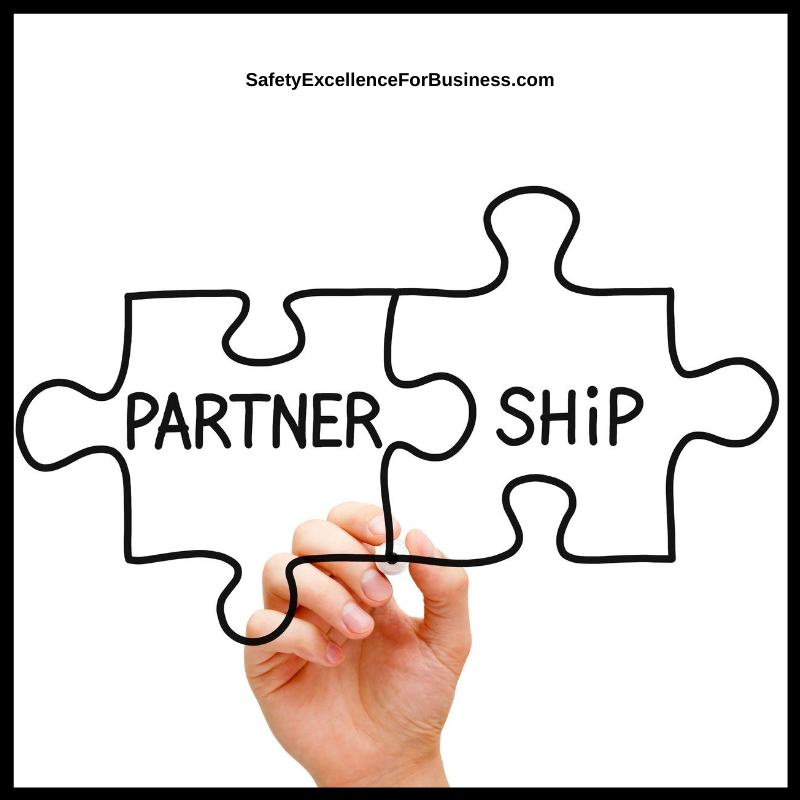 When I was transferred to the DuPont Belle, West Virginia plant in 1987, the Total Recordable Injury Case Rate (TRC) was about 5.8 and emissions to air, water and ground, as reported in the EPA Toxic Release Inventory (TRI) annual report, was over 6,000,000 pounds/year. Within three years, both of these had dropped by about 95% to a TRC of about 0.3 and a TRI of about 275,000 pounds/year. Emissions to the environment is one way to measure how well the process safety is working; the better the process safety work, the lower the emissions to the environment.
When I was transferred to the DuPont Belle, West Virginia plant in 1987, the Total Recordable Injury Case Rate (TRC) was about 5.8 and emissions to air, water and ground, as reported in the EPA Toxic Release Inventory (TRI) annual report, was over 6,000,000 pounds/year. Within three years, both of these had dropped by about 95% to a TRC of about 0.3 and a TRI of about 275,000 pounds/year. Emissions to the environment is one way to measure how well the process safety is working; the better the process safety work, the lower the emissions to the environment.
I was using a highly, participative leadership process I called Partner-Centered Leadership for Occupational Injuries and Health, as well as for Process Safety; this was a highly integrated process with just about everyone involved, and consciously working together to make our plant safer and have less impact on the environment. When I was transferred by DuPont in 1995 and replaced by a traditional plant manager using a top-down driven management process, things changed.
The process safety work was pulled away from the occupational safety and health effort and taken over by the managers. The occupational safety and health work continued to be led by the first and second level supervisors using the Partner-Centered Leadership approach. The highly participative leadership approach and the top-down management approach were running in parallel (the same business conditions, the same regulatory pressures, the same people, the same community). The occupational safety and health performance stayed at a rate of 0.3 or better for the next 15 years.
But the five different plant managers who came in during that period gradually cut back the process safety management resources and effort. They cut back on the manpower, allowed work-orders to pile up, stretched out the inspection intervals, ignored feedback from the operators and mechanics about the deteriorating conditions, etc. The TRI emissions rose by about ten-fold to over 2,500,000 pounds/year.
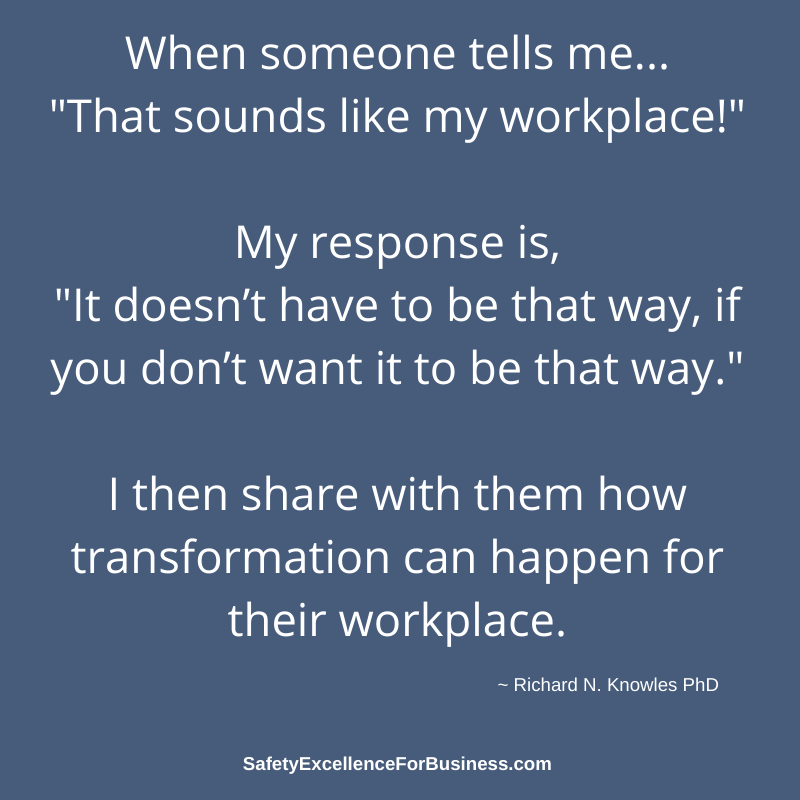 The process safety management collapsed in January of 2010 with major, accidental releases to the air and river and they had a man get killed with a phosgene release. When the US Chemical Safety Board investigated in late 2010, they reported that while the occupational safety and health performance was the best in the DuPont Company, the process safety management had fallen apart and the plant was not even using the DuPont standard procedures. This was a sad commentary about how far things had fallen.
The process safety management collapsed in January of 2010 with major, accidental releases to the air and river and they had a man get killed with a phosgene release. When the US Chemical Safety Board investigated in late 2010, they reported that while the occupational safety and health performance was the best in the DuPont Company, the process safety management had fallen apart and the plant was not even using the DuPont standard procedures. This was a sad commentary about how far things had fallen.
This 19-year case study clearly shows that a highly participative leadership process produces much better results that the top-down management process.
An Online Course Offering
Beginning August 24th, I will be presenting a six-week course on Leadership and Using the Process Enneagram©. The Process Enneagram© was a key leadership tool I used when I was at Belle. I have used this tool successfully around the world with people in all sorts of organizations and businesses in the 25 years since I retired from DuPont. Wherever I have used it in my consulting, safety and total performance has improved.
This Online course is the first in a series to teach about leading and using the Process Enneagram©.
 You can’t turn on the news or check your Internet homepage without sensing the depth of the issues that our country is experiencing. Whether it is returning to the workplace amidst COVID-19 rules, political protests, religious non-tolerance, or negative nightly news events – we’re experiencing a wide berth of dramatic events. And each of us has an opinion, a response, a way that we individually see these events and cope with this discord.
You can’t turn on the news or check your Internet homepage without sensing the depth of the issues that our country is experiencing. Whether it is returning to the workplace amidst COVID-19 rules, political protests, religious non-tolerance, or negative nightly news events – we’re experiencing a wide berth of dramatic events. And each of us has an opinion, a response, a way that we individually see these events and cope with this discord.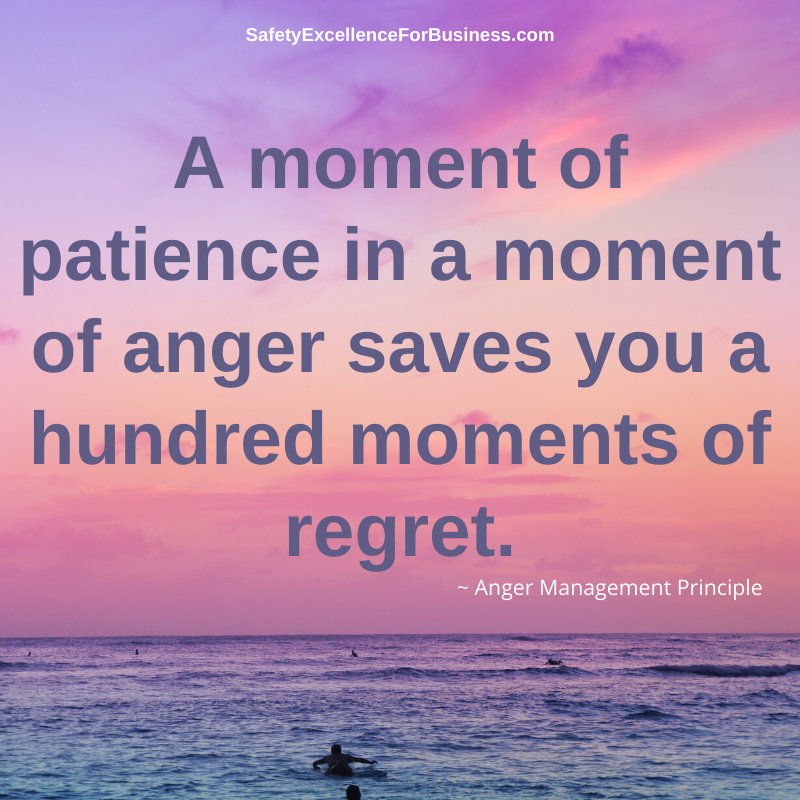 It doesn’t have to be that way! Take a timeout!
It doesn’t have to be that way! Take a timeout!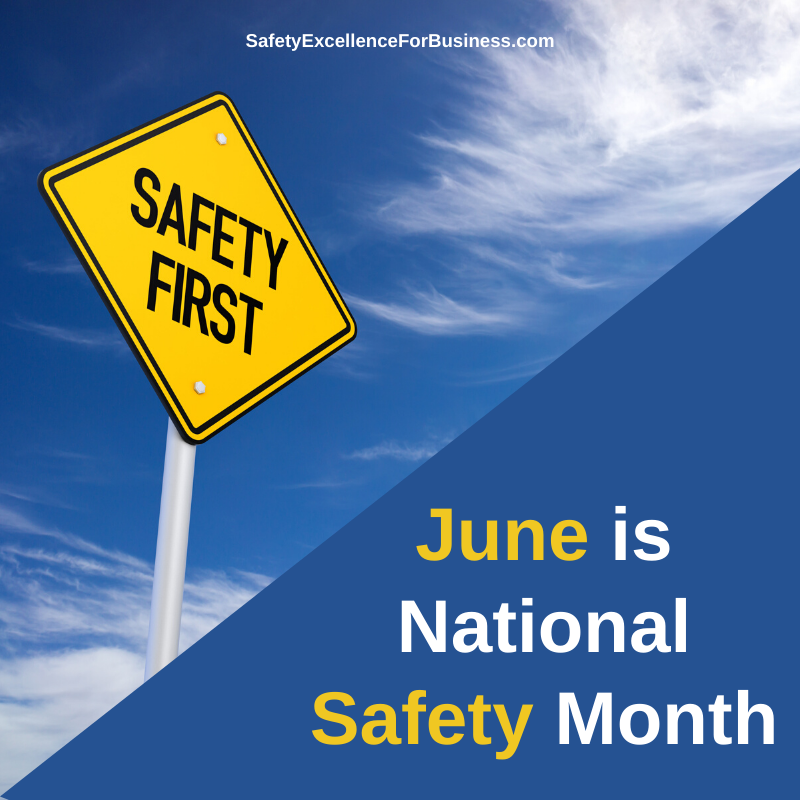 In times like this, when the business and production activities are ramping up, there is a real danger that safety problems will show up. Any time the level of activity changes, up or down, is a time of danger.
In times like this, when the business and production activities are ramping up, there is a real danger that safety problems will show up. Any time the level of activity changes, up or down, is a time of danger. It will not be easy as people are returning to the workplace. Leaders and managers must get out of their offices and purposefully engage with the people. They need to talk about the COVID-19 problem, share what is happening, and talk about the problems with which they are dealing. They need to do this with openness, honesty, respect, and caring. This is not just a one-off contact; leaders and managers need to engage in these conversations every day!
It will not be easy as people are returning to the workplace. Leaders and managers must get out of their offices and purposefully engage with the people. They need to talk about the COVID-19 problem, share what is happening, and talk about the problems with which they are dealing. They need to do this with openness, honesty, respect, and caring. This is not just a one-off contact; leaders and managers need to engage in these conversations every day! I have abstracted it here for those reading this newsletter since you may have missed it.
I have abstracted it here for those reading this newsletter since you may have missed it. In all cases, the healthcare provider and local health department should be consulted.
In all cases, the healthcare provider and local health department should be consulted.
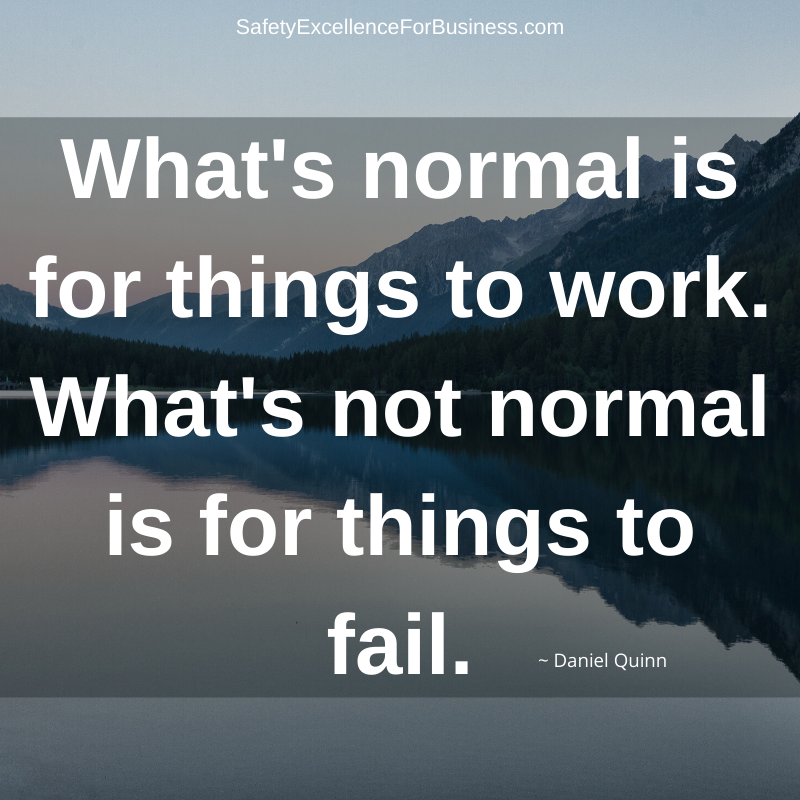 This pandemic has created a lot of change and instability in our society. The FDA and the CDC have changed or suspended many rules and regulations in order to attack the pandemic and save lives. It is a period of high energy and creativity as people everywhere are coming up with ways to help people. Industries have shifted to making PPE-like face masks. The foodservice industry has shifted to take out and delivery. This creativity and positive energy is gratifying.
This pandemic has created a lot of change and instability in our society. The FDA and the CDC have changed or suspended many rules and regulations in order to attack the pandemic and save lives. It is a period of high energy and creativity as people everywhere are coming up with ways to help people. Industries have shifted to making PPE-like face masks. The foodservice industry has shifted to take out and delivery. This creativity and positive energy is gratifying. Like all flus, we need to take it seriously and take appropriate steps to protect ourselves and our families. I have read a lot about what employers should do to protect their employees, which makes sense, but it sounds as if they are running a kindergarten class. OSHA has declared the flu as a recognized workplace hazard, so employers do have a responsibility to do what they can to protect the people, but there is a lot we can do for ourselves.
Like all flus, we need to take it seriously and take appropriate steps to protect ourselves and our families. I have read a lot about what employers should do to protect their employees, which makes sense, but it sounds as if they are running a kindergarten class. OSHA has declared the flu as a recognized workplace hazard, so employers do have a responsibility to do what they can to protect the people, but there is a lot we can do for ourselves. The pain and suffering is miserable.
The pain and suffering is miserable.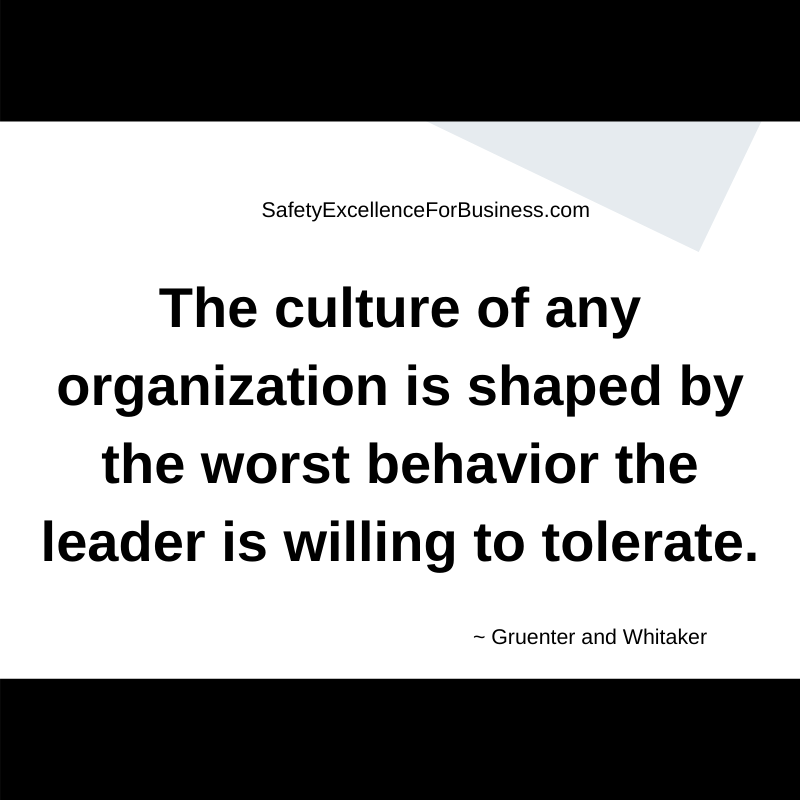 Changes are coming fast and furious. Everything seems to be changing all around us. This can cause unsettling feelings and a loss of control. However, in the middle of all this change, one area that can be steady for us is our relationships with each other.
Changes are coming fast and furious. Everything seems to be changing all around us. This can cause unsettling feelings and a loss of control. However, in the middle of all this change, one area that can be steady for us is our relationships with each other. Artificial intelligence and robots, block chains and bitcoins, the opioid epidemic, political strife, and workplace violence, international worries and potential conflicts are some of the challenges facing all of us. There is a critical need for people, in all walks of life, to come together to openly and honestly talk about our challenges, share our thinking and learn together. We do not have to be blindly swept along. We can make decisions and do the things that we need to do to help to make the world a better place.
Artificial intelligence and robots, block chains and bitcoins, the opioid epidemic, political strife, and workplace violence, international worries and potential conflicts are some of the challenges facing all of us. There is a critical need for people, in all walks of life, to come together to openly and honestly talk about our challenges, share our thinking and learn together. We do not have to be blindly swept along. We can make decisions and do the things that we need to do to help to make the world a better place.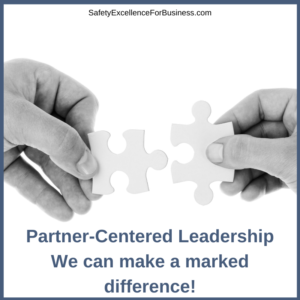 When I talk about safety. my thinking goes well beyond the traditional safety numbers, training and procedures. It includes ideas about respect and how everyone has agreed to work together. It includes ideas about personal responsibility, integrity and dedication to helping everyone improve. It includes openness, honesty and sharing information abundantly. It includes ideas about the deeper, often hidden patterns of behavior which have a profound impact on the work environment and drive much of the behavior. It includes the fact that the managers and leaders have the largest impact on their organization’s performance. It includes the understanding that managers focus on reliability, stability, predictability and control as they try to maintain the status quo and that leaders focus on the people, change and the future sharing information abundantly, treating people with respect and helping people find meaning in their work. Both good leaders and managers are needed.
When I talk about safety. my thinking goes well beyond the traditional safety numbers, training and procedures. It includes ideas about respect and how everyone has agreed to work together. It includes ideas about personal responsibility, integrity and dedication to helping everyone improve. It includes openness, honesty and sharing information abundantly. It includes ideas about the deeper, often hidden patterns of behavior which have a profound impact on the work environment and drive much of the behavior. It includes the fact that the managers and leaders have the largest impact on their organization’s performance. It includes the understanding that managers focus on reliability, stability, predictability and control as they try to maintain the status quo and that leaders focus on the people, change and the future sharing information abundantly, treating people with respect and helping people find meaning in their work. Both good leaders and managers are needed.




